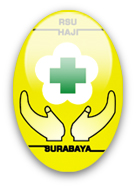Melissa McCracken, MPH, Miho Olsen, MPH, Moon S. Chen, Jr., PhD, MPH, Ahmedin Jemal, DVM, PhD, Michael Thun, MD, MS, Vilma Cokkinides, PhD, MSPH, Dennis Deapen, DrPH and Elizabeth Ward, PhD Ms. McCracken is Epidemiologist, Department of Epidemiology and Surveillance Research, American Cancer Society, Atlanta, GA.
Ms. Olsen is Epidemiologist, Rollins School of Public Health, Emory University; and Department of Epidemiology and Surveillance Research, American Cancer Society, Atlanta, GA.
Dr. Chen is Professor and Principal Investigator, Asian American Network for Cancer Awareness Research and Training; and Associate Director, Population Research and Cancer Disparities, University of California-Davis, Cancer Center, Sacramento, CA.
Dr. Jemal is Strategic Director, Cancer Occurrence, Department of Epidemiology and Surveillance Research, American Cancer Society, Atlanta, GA.
Dr. Thun is Vice President, Department of Epidemiology and Surveillance Research, American Cancer Society, Atlanta, GA.
Dr. Cokkinides is Strategic Director, Risk Factor Surveillance, Department of Epidemiology and Surveillance Research, American Cancer Society, Atlanta, GA.
Dr. Deapen is Professor, Keck School of Medicine, University of Southern California, Los Angeles, CA.
Dr. Ward is Managing Director, Surveillance Research, Department of Epidemiology and Surveillance Research, American Cancer Society, Atlanta, GA.
This article is available online at http://CAonline.AmCancerSoc.org
Disclosures: The collection of cancer incidence data used in this study was supported by the California Department of Health Services as part of the statewide cancer-reporting program mandated by California Health and Safety Code Section 103885; the National Cancer Institute's Surveillance, Epidemiology, and End Results Program (SEER Program) under contract N01-PC-35136 awarded to the Northern California Cancer Center, contract N01-PC-35139 awarded to the University of Southern California, and contract N02-PC-15105 awarded to the Public Health Institute; and the Centers for Disease Control and Prevention's National Program of Cancer Registries under agreement #U55/CCR921930–02 awarded to the Public Health Institute.
Funding for M.S.C.'s role is attributable to Grant Number U01 CA114640 from the National Cancer Institute and P01 CA109091–01A, funded both by the National Cancer Institute and the National Center on Minority Health and Health Disparities.
The ideas and opinions expressed herein are those of the authors, and endorsement by the State of California, Department of Health Services, the National Cancer Institute, and the Centers for Disease Control and Prevention or their contractors and subcontractors is not intended, nor should it be inferred.
ABSTRACT
Many studies demonstrate that cancer incidence and mortality
patterns among Asian Americans are heterogeneous, but national
statistics on cancer for Asian ethnic groups are not routinely
available. This article summarizes data on cancer incidence,
mortality, risk factors, and screening for 5 of the largest
Asian American ethnic groups in California. California has the
largest Asian American population of any state and makes special
efforts to collect health information for ethnic minority populations.
We restricted our analysis to the 4 most common cancers (prostate,
breast, lung, colon/rectum) and for the 3 sites known to be
more common in Asian Americans (stomach, liver, cervix). Cancer
incidence and mortality were summarized for 5 Asian American
ethnic groups in California in order of population size (Chinese,
Filipino, Vietnamese, Korean, and Japanese). Chinese Americans
had among the lowest incidence and death rate from all cancer
combined; however, Chinese women had the highest lung cancer
death rate. Filipinos had the highest incidence and death rate
from prostate cancer and the highest death rate from female
breast cancer. Vietnamese had among the highest incidence and
death rates from liver, lung, and cervical cancer. Korean men
and women had by far the highest incidence and mortality rates
from stomach cancer. Japanese experienced the highest incidence
and death rates from colorectal cancer and among the highest
death rates from breast and prostate cancer. Variations in cancer
risk factors were also observed and were for the most part consistent
with variations in cancer incidence and mortality. Differences
in cancer burden among Asian American ethnic groups should be
considered in the clinical setting and in cancer control planning.
VIEW DETAIL


